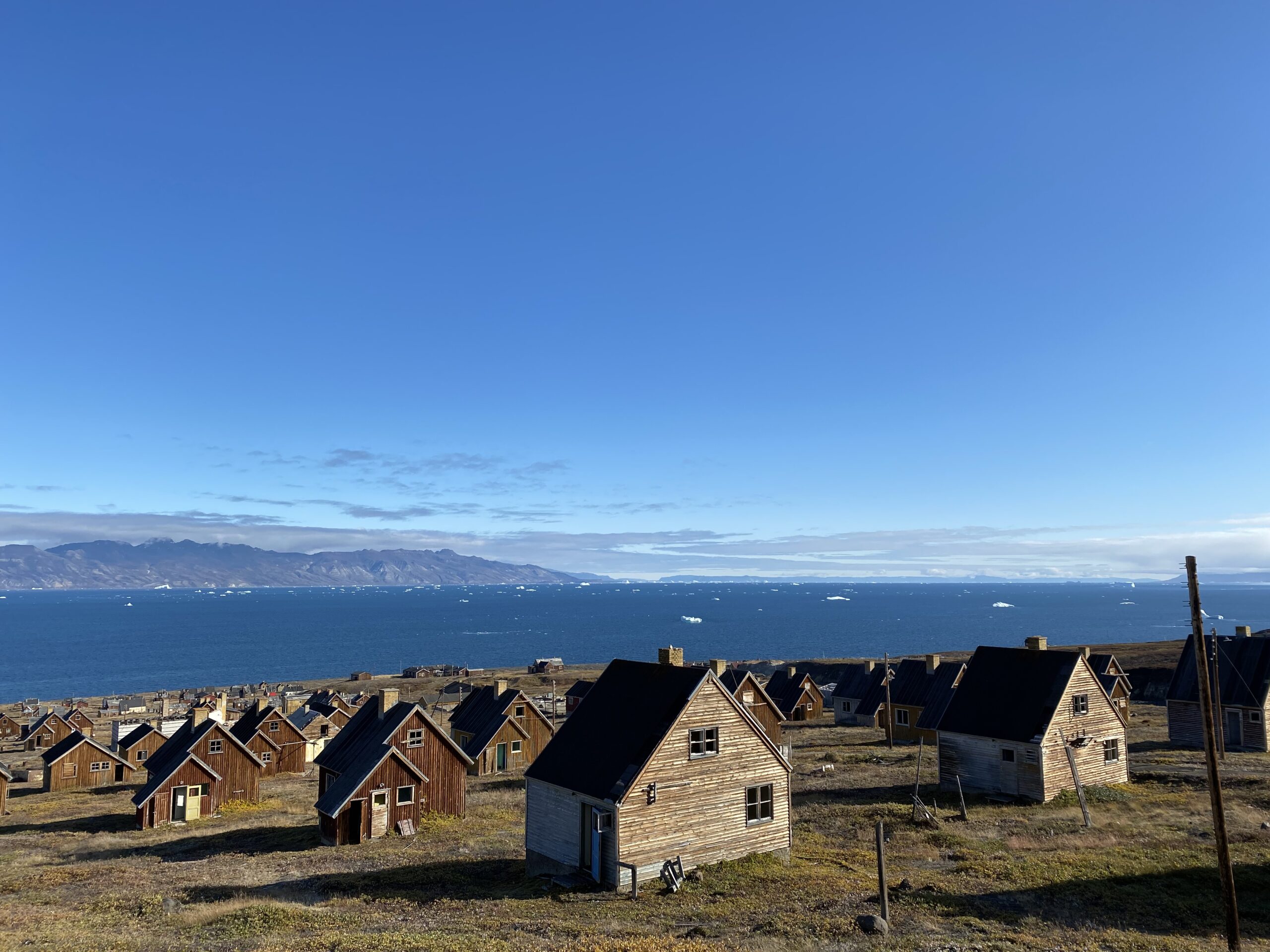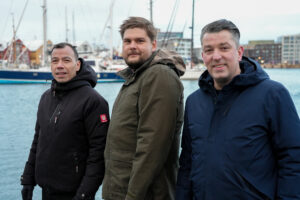
K´utdligssat – an abandoned city, seen from bird’s-eye view
We didn’t just visit 13 inhabited places, and told the locals of the many opportunities they had with NAPAs Culture Funding during our travels to North Greenland, we also had an opportunity to visit the mining city Qullissat, that was closed down in 1972, when its mine was discontinued.
You could already sense the type of life that must have existed in the city 50 years ago, from the dock of the ship ‘TULU’.
When the “ship’s doctor” Michael Krogsgaard (who wasn’t actually the ship’s doctor, but a doctor, and a fellow passenger), and our intern, Maasi, got set off on the beach, they found a foundation just above the beach. The house that had been there, had fallen apart long ago, and the remains of the ruins had probably been swept away from the wind, down to the shore, where the waves had carried them away, forever saved, and forgotten.
This is where we start up the drone to fly.
While the rest of our travel companions spread out towards every direction, Michael and Maasi follow the nearest path, which goes up through the lower parts of the city. Between the many houses of various shapes and colors, they capture the moments in photos and film, and Maasi gets to further practice controlling the little winged machine. As Michael has told many times before, since the drone first took flight in Sornoro, it is keeping itself quite well and stable in the wind.
The drone quickly runs out of battery, mainly because they are filming a lot, so Michael gets a new battery in it as they reach the old hospital. The drone once again takes flight, but we make sure to keep the filming to a minimum from now on.
The city scene changes further up, as the houses take on natural colors, from the previous colorful varieties, and become more similar to each other, with very little differences.
The Castle
We head towards the river, and on the other side, you can see The Castle. A massive house with three floors that still stands tall over the sea, despite the wind and weather.
Unfortunately, the drone doesn’t get to fly over The Castle, as we didn’t take Michael (who had packed the drone along the way) with us over the river. Though there weren’t that much water flowing through the river, the stones were, on some places, covered in clay, and Michael, who is good and well up in his years, didn’t feel it safe to cross.
The Castle is quite a sight, and if you should visit Qullissat, then you just have to visit the house with the many, large rooms.
From The Castle, our path takes us to the graveyard, where we meet many of our travel companions, and together we move towards the beach as our time here comes to and end.
We’ve spent three ours in “The city that will not die”, a permanent reminder of a greenlandic politic that, to this day, five decades later, is still being discussed between all people great and small.
Other news

Greenlandic applicants to Nordjobb have doubled
A hefty ad campaign by NAPA has borne fruit. Nordjobb is an offer for young adults living in the Nordic countries to go to one of the other Nordic countries on a work stay. While there are approximately 80-90 young adults who go to Greenland

Application deadlines for summer and autumn 2023 has been changed
Deadline for applications for 100.000-200.000 DKK is extended to October 15th The deadline for applications between 100.000 and 200.000 DKK is extend till October 15th. As the applications will be assessed by NAPA’s Board. You can expect a response after November 11. No application deadline

West Nordic Day 2021
West Nordic Day 2021 will be held on Thursday September 23 in Greenland, The Faroe Islands and Iceland to strengthen and put into focus the cultural collaboration between these 3 West Nordic countries.In Nuuk NAPA has organised to separate and fascinating events in Katuaq. The

New Arctic Kitchen – Local food from the Arctic in new ways
The Nordic Council of Ministers has supported New Arctic Kitchen, a project on food and tourism, where local food from the Arctic are offered to tourists in a simple and inviting way. This has been done through the Nordic Arctic Programme. New Arctic Kitchen’s goal



